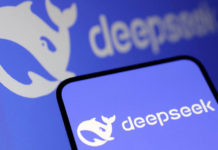What generative Al means for businesses?
A collection of algorithms known as “generative AI” may create what appear to be brand-new, realistic text, images, or audio out of training data. The most potent generative AI algorithms are based on foundation models, which are trained in a self-supervised manner on an enormous amount of unlabeled data to find underlying patterns for a variety of tasks.
As an illustration, the foundation model GPT-3.5, which was trained on a substantial amount of text, can be modified for sentiment analysis, text summarization, and question answering. A multimodal (text-to-image) foundation model called DALL-E can be modified to produce new images, enlarge old images, or generate new versions of paintings.
The benefits of generative artificial intelligence (AI) for corporate processes and workflows have become evident very quickly. This holds true regardless of whether the company is using ChatGPT Enterprise or any other app or application from the expanding collection of generative AI tools.
Staff workers can receive assistance from generative AI in handling their current workloads, and in certain situations, these models can be trained to handle completely new activities and work categories. In each of these scenarios, generative AI is assisting companies in streamlining and automating their operations in scalable, repeatable ways that support their expansion objectives.
Generative AI can assist your operations in a number of ways, contingent on your business priorities and needs.
Let’s look at some of the benefits of generative AI for businesses:
Benefits of Leveraging Generative AI in Your Business
Quicker delivery times on projects: Generative AI models may produce fresh content, reactions, valuable data, and other valuable outcomes at scale for your organization. Your team will be able to finish projects on schedule and with greater efficiency as a result, which will eventually save costs.
Fewer hands-on employee requirements: Generative AI solutions may fill in the gaps and produce consistent, accurate, and repeatable outcomes, whether you discover that some activities are too tedious for employees to focus on or that you lack the experience of in-house workers to perform them.
Support and QA for employee-driven tasks: Generative artificial intelligence (AI) systems can function as quality assurance analysts, reviewing employee work for flaws and occasionally fixing them without the need for human interaction. This is especially true for coding and product development jobs, but it can also apply to data analytics and other content types.
Enhanced user experiences: Numerous generative AI capabilities are currently included in software that your clients or staff use. Search engines, enterprise knowledge bases, project management platforms, and other user-facing technologies are tailored for natural language inputs and an improved user experience overall with the aid of generative AI.
Industry-specific solutions: Numerous generative AI models have been refined to meet the needs of various industries and functions, including manufacturing, insurance, healthcare, pharmaceuticals, and more. There’s probably a generative AI model that will meet your goals and streamline your workflow if you work in a field with stringent compliance regulations.

What Are Generative AI Best Practices for Business Usage?
The best approach to controlling internal business use of these models is to set best practices and processes for the application of generative AI. To improve the results of generative AI in your company, adhere to these best practices:
- Utilize approved, reputable, and confirmed sources of data for your inputs.
- Provide a training program and AI usage policy that specify when and how staff members can utilize generative AI tools.
- As your business needs change, collaborate with a generative AI provider to develop models that can grow or be adjusted. It’s also advantageous to find vendors whose products work well with the tools you already have.
- Prior to making a commitment, conduct thorough research on the policies, terms, and reputations of generative AI vendors.
- Think about your budget and the equipment that you can afford; many foundation models are not very expensive, but the cost can quickly increase based on how much you use them.
- Take into account the threat landscape in cybersecurity for any generative AI models you utilize, and adjust your defenses accordingly.
Conclusion
Since many models of generative AI technology are available in limited but reasonably priced versions that nevertheless have a wide range of capabilities, it is a very effective tool that can be used by companies of different sizes and backgrounds. The most crucial thing to keep in mind when implementing generative AI in your company is that these technologies are only as good as the people, processes, and inputs that surround them. If you ensure that every staff member receives the necessary training and resources to apply generative AI to their work efficiently, your company will experience unprecedented levels of automation, intelligent support, and productivity.






